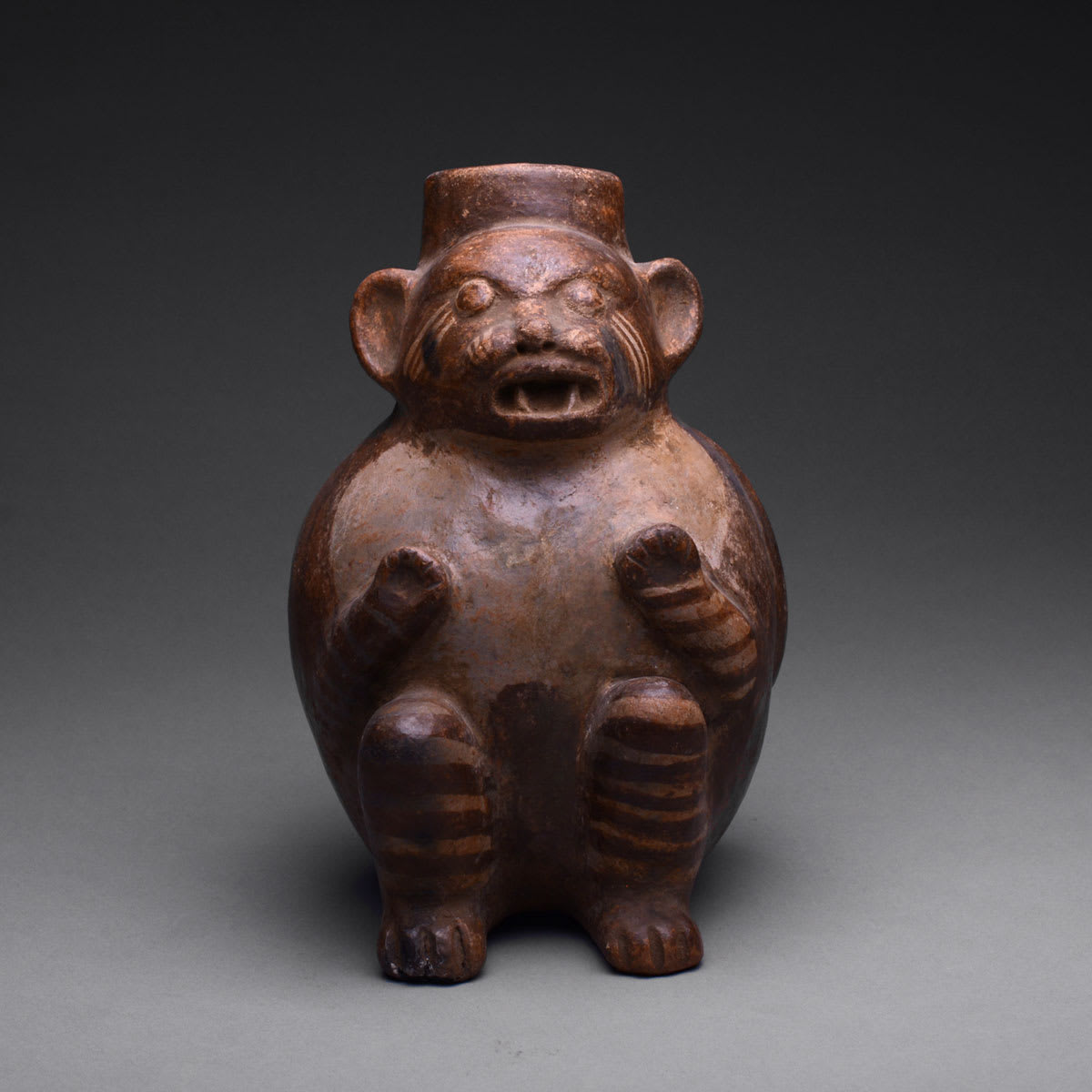Terracotta Monkey Effigy Vessel, 100 BCE - 500 CE
Terracotta
height 21 cm
height 8 1/4 in
height 8 1/4 in
PF.4493
Further images
Monkeys were frequent subjects in ancient Costa Rica art, and because of their playful character, they are between the most aesthetically pleasing to look at. Sculptors and ceramic artists enjoyed...
Monkeys were frequent subjects in ancient Costa Rica art, and because of their playful character, they are between the most aesthetically pleasing to look at. Sculptors and ceramic artists enjoyed depicting animals in a variety of ways, excelling in bringing to life their particular nature. Just as artists study the human form in order to paint a portrait, the Costa Rican artists must have studied animal behavior with great interest and observational powers. This charming vessel shows a small monkey in a seated position, with its paws tucked against its sides, and its mouth open. He is like those inimitable and adorable monkeys who perform with an organ grinder. There are very fine and expressive details such as thin lines of white paint indicating whiskers, broader stripes suggesting patterns on the fur, and the tail curling around the back. With considerable skill the artist has captured a moment of expectancy, after the monkey's tricks are done and he is hoping for a reward. Monkeys were often used to represent minor deities or sorcerers who have taken animal form. Respected and admired for their remarkable personalities monkeys have long been objects of affection. And seeing this delightful vessel it is easy to understand why.







